Dodge Hydroil Vane Motors are high-performance hydraulic motors designed for a wide range of industrial applications. They are known for their reliability, efficiency, and versatility. Dodge Hydroil Vane Motors can be used in various applications, including:
- Industrial machinery
- Mobile equipment
- Marine applications
- Agricultural equipment
These motors are available in various sizes and configurations to meet the specific requirements of each application. They feature a robust design and high-quality construction, ensuring durability and long service life.
One of the key advantages of Dodge Hydroil Vane Motors is their ability to operate in any position. This flexibility makes them ideal for use in applications where space is limited or where the motor needs to be mounted in a specific orientation.
Dodge Hydroil Vane Motors are high-performance hydraulic motors designed for a wide range of industrial applications. They are known for their reliability, efficiency, and versatility. Dodge Hydroil Vane Motors can be used in various applications, including:
- Industrial machinery
- Mobile equipment
- Marine applications
- Agricultural equipment
These motors are available in various sizes and configurations to meet the specific requirements of each application. They feature a robust design and high-quality construction, ensuring durability and long service life.
One of the key advantages of Dodge Hydroil Vane Motors is their ability to operate in any position. This flexibility makes them ideal for use in applications where space is limited or where the motor needs to be mounted in a specific orientation.


-
 1
1
-
 2
2
Dodge Hydroil Vane Motors are high-performance hydraulic motors designed for a wide range of industrial applications. They are known for their reliability, efficiency, and versatility. Dodge Hydroil Vane Motors can be used in various applications, including:
- Industrial machinery
- Mobile equipment
- Marine applications
- Agricultural equipment
These motors are available in various sizes and configurations to meet the specific requirements of each application. They feature a robust design and high-quality construction, ensuring durability and long service life.
One of the key advantages of Dodge Hydroil Vane Motors is their ability to operate in any position. This flexibility makes them ideal for use in applications where space is limited or where the motor needs to be mounted in a specific orientation.
Ask a question and I''ll find the answer in the document
Finding information in a document is now easier with AI
Related papers
-
Dodge Torque-Arm Speed Reducers Taper Bushed Metric HXT625, 725 Owner's manual
-
Dodge Torque-Arm Speed Reducers Ball Bearing TD715-725, 815-825 Owner's manual
-
Dodge Short Series Brake Motors Owner's manual
-
Dodge Torque-Arm TXT/HTX Single Reduction Taper Bushed and Straight Bore Speed Reducers Owner's manual
-
Dodge HSCXT4A-6B Owner's manual
-
Dodge Dodge HSCXT105 Owner's manual
-
Dodge Torque-Arm TXT Double Reduction Taper Bushed & Straight Bore Speed Reducers Owner's manual
-
Dodge Double Reduction Screw Conveyor and Hydroil Screw Conveyor Drive Owner's manual
-
Dodge Torque-Arm Speed Reducers Straight Bore & Taper Bushed Owner's manual
-
Dodge CST Controlled Start Transmission Owner's manual
Other documents
-
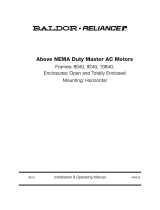 Baldor-Reliance Above NEMA Duty Master AC Motors Owner's manual
Baldor-Reliance Above NEMA Duty Master AC Motors Owner's manual
-
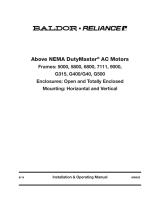 Baldor-Reliance Above NEMA DutyMaster AC Motors (Horizontal & Vertical) Owner's manual
Baldor-Reliance Above NEMA DutyMaster AC Motors (Horizontal & Vertical) Owner's manual
-
Baldor DODGE Torque-Arm TXT12 User manual
-
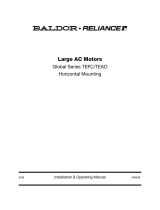 Baldor-Reliance Large AC Motors Global Series TEFC/TEAO Horizontal Mounting Owner's manual
Baldor-Reliance Large AC Motors Global Series TEFC/TEAO Horizontal Mounting Owner's manual
-
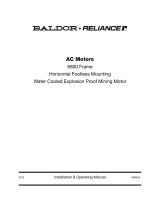 Baldor-Reliance Large A-C Motors 6800 Frame Horiz. Footless Water Cooled EXP Proof Mining Motor Owner's manual
Baldor-Reliance Large A-C Motors 6800 Frame Horiz. Footless Water Cooled EXP Proof Mining Motor Owner's manual
-
Danfoss BK Brake User guide
-
Danfoss Series 15/70 Transmissions User guide
-
Danfoss WG Motor User guide
-
Grundfos CR 125 Data Booklet
-
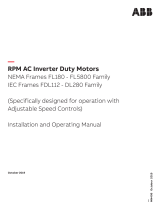 Baldor-Reliance RPM AC Inverter Duty Motors Owner's manual
Baldor-Reliance RPM AC Inverter Duty Motors Owner's manual






